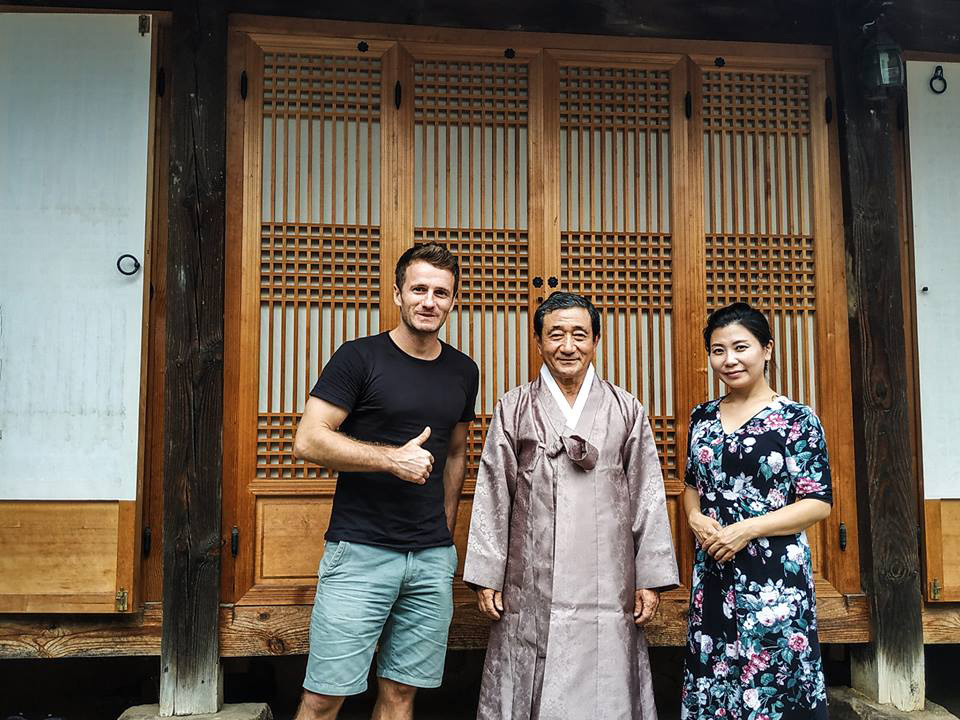“In the golden age of Asia
Korea was one of its lamp bearers,
And that lamp is waiting
To be lighted once again
For the illumination of the East.”
– Rabindranath Tagore
I’ve spent the past month and a half zigzagging across South Korea, and spending a couple of weeks in Seoul (a city which I have grown to love!).
It’s my first trip to this country and prior to arriving, I knew very little about Korea itself. The novelty and excitement of arriving in a new destination and culture kept me enthralled, at least initially. However, I also wanted to try and get an “authentic” Korean experience rather than simply check off a list of tourist destinations.
In Sokcho, on the east coast, I arrived to a town whose hotels and hostels were fully booked. I posted about my plight and my Facebook friends suggested to spend a couple nights in a “jimjilbang,” sleeping on the floor of a Korean sauna. I thought it was a joke and was very apprehensive at first. I was shocked once I entered the locker room area and saw so many naked men walking towards me. Where do I actually sleep? Do I have to be naked too? So many questions rushed through my mind.
Overall, though, the experience was interesting and positive; I loved the “homey” communal feel and the general good vibes of the place. This was a genuine experience that I would always remember; and I wanted to experience more of the raw uniqueness of Korea, if I could.
Most visitors to South Korea get their fill of culture from the hanok homes and palaces (Gyeongbokgung and Changdokgeong) of Seoul’s old district, formerly known as Hanseong. While Seoul’s traditional area near Jongno is a wonderful neighborhood, it is only a tiny oasis in an enormous metropolis and a faint remembrance of the past. The area receives so many tourists that its main purpose as a destination is to snap up a few photos for the Instagram, perhaps in a hanbok dress, and only worth a 1-2 hours stop for most visitors.
This is nice if you want a cool profile photo that’ll get you a few hundred likes — but what if you want to go deeper? To truly indulge in all of your romantic notions of East Asian culture, one has to depart far from the modern metropolis of Seoul and travel afield to Gyeongsangbuk province, the former homeland of the first dynasty to unify all of Korea, the Silla kingdom.
Hahoe village, near Andong, is an official UNESCO heritage site and a picturesque traditional town surrounded by rivers and green cliffs, pine trees, and Confucian schools. It is an amazing place and absolutely worth a visit on your South Korean itinerary. But even this place is by and large a tourist destination, and the town seems empty and uninhabited.
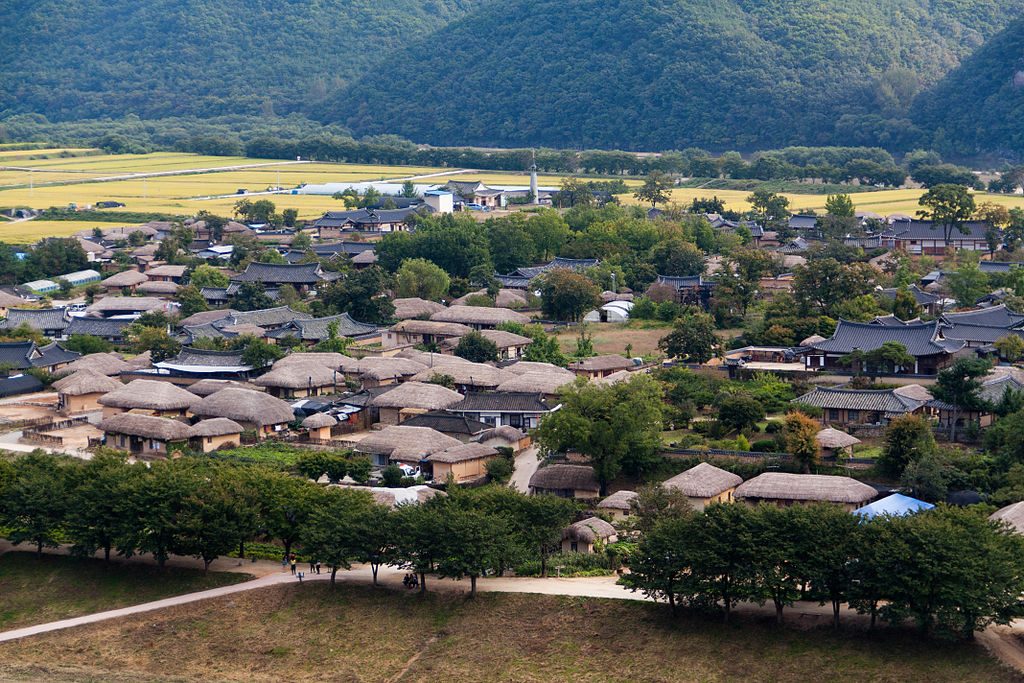
Hahoe village in Gyeongsangbuk-do, a UNESCO World Heritage site.
Fortunately, my wish to experience the “true” Korean culture and actually live it came true, though in a roundabout way. When I stayed in Seoul, I told the receptionist about my intentions to visit this region, and she connected me with Seungah, a professional Korean storyteller, through WhatsApp.
Seung Ah has founded her own performing arts company, called Arirang Storytelling, and has performed as a professional storyteller throughout twenty-five countries throughout the world.
Seungah kindly extended an invitation for me to stay and experience life in a functional village about 30 minutes away, in the small town of Sachon. She is hoping to create a “storytellers-in-residence” program and invite professional storytellers from around the world to live in this village, where she plans to stage performances for local and international audiences alike each spring and autumn.
Although I had no notion of what to expect, I stuck to my life’s motto of “err on the side of action” and accepted the offer, keeping an open heart and mind to the experience.
A way of life that is slowly vanishing
Recently I read a few articles from Nikkei Asian Review about how rural areas in Japan are becoming depopulated. Not only does Japan have a declining birth rate, but every year, 100,000 people move to Tokyo.
Smaller towns and communities in the countryside have been vanishing while people, especially young people, rush into cities — and into the world of modernization and globalization.
Bangkok, my home for several years, is home to 14 million people while the second-biggest city in Thailand has only 200,000. Moreover, young generations have embraced globalization and have less interest in preserving the things that make their country and culture unique.
All the time, global brands are moving in; encroaching upon the local way of life and diminishing the culture. Starbucks, McDonalds, and KFC are being built where traditional markets and restaurants once stood. From Dubai to Bangkok, all of the world’s big cities are starting to look more and more homogenized.
For those who value true and authentic travel (and the chance to experience something new and exotic), this is a shame.
Uiseong county, home to Sachon village, is a community which is in danger of disappearing. This is a cultural heart and self-named “spiritual heart” of South Korea which maintains a firm footing in Korea’s reverent and storied past. This is the land where people live simple and carefree lives according to Confucianist philosophy, a practical doctrine of self-cultivation and refinement. Confucianism encourages the pursuit of knowledge, respect towards others, and living in harmony with nature.
Koreans here for generations have endeavored tirelessly to maintain their culture and traditions alive over thousands of years despite the numerous wars and colonization the peninsula has suffered through. Korea underwent near cultural extinction during the Japanese colonial period, and much of their historical heritage was destroyed. As a result, other Asian cultures such as China, Japan, and Thailand carry a larger profile internationally.
Here in Gyeongsangbuk one finds a reclusive and exotic way of life, the type that most of us only get to see and experience in historical movies. And sadly, the window of opportunity to discover this lifestyle is closing, as it is quickly disappearing.
A village that “shares only love”
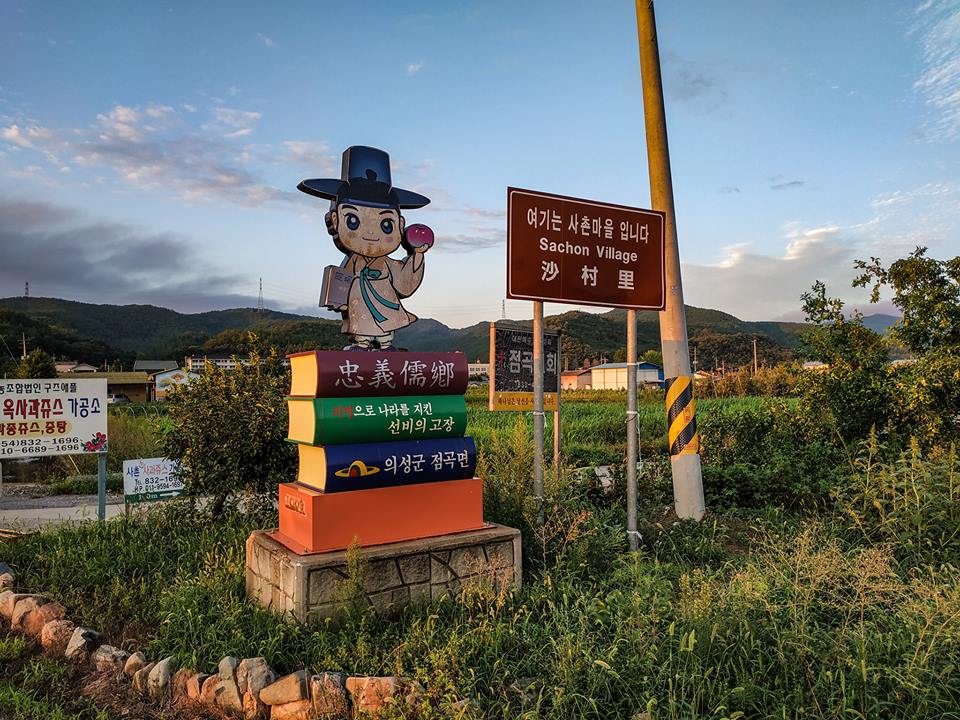
Seung Ah and He Yun, my hosts in Sachon, are descended from the Kim clan of Silla, and can trace their ancestry back for two thousand years. I first met them at the bus terminal in Andong and we shared a dinner of bibimbap together. I was a bit nervous at first, as I knew very little about them. I also worried that I might run afoul of their customs.
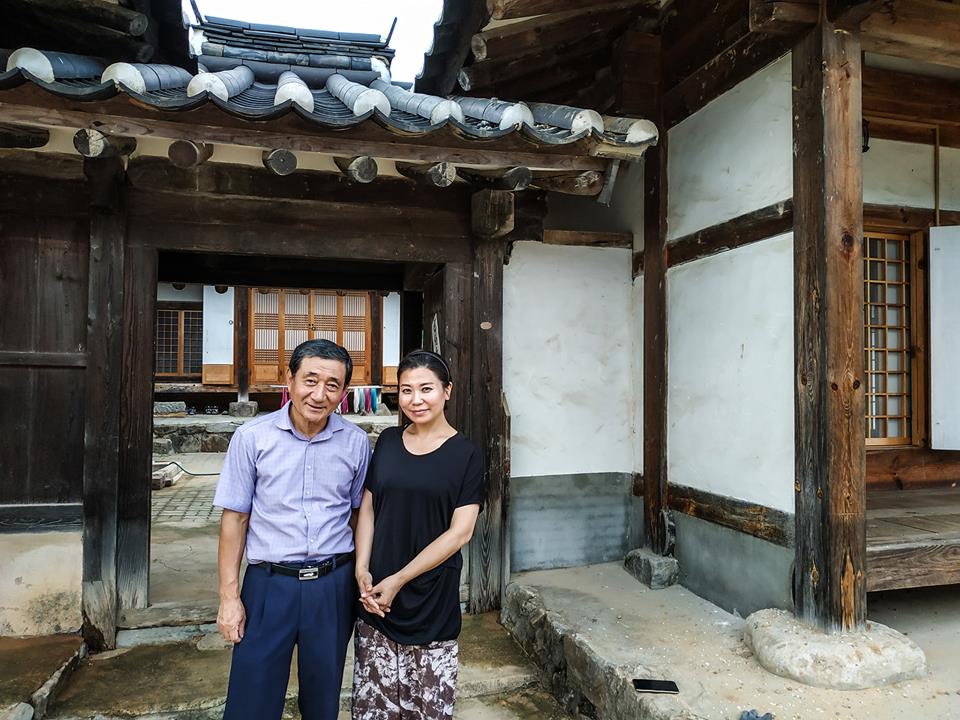
He Yun, however, carries a gentle benevolence about him — as though nothing at all is able to disturb or offend him. I would also come to know that he has a heart of gold, and the entire time he treated me as one of his own family. He has children about my age, and even reminds me a great deal of my own deceased father.
Together, we drove to their small town further afield. We stopped first at the local museum, where the director greeted us and offered me coffee. He gave me a tour of the museum, which was small but nice and modern, and told me about the history of the town.

Across the street from the museum lies a forest which was planted by the village founder more than 600 years ago. In 1392, he was told that if he did not “vitalize” the western side of the village, that great people would not be born here. So they planted these trees for the sake of the future generations.

Afterwards, my hosts took me to a village home to have dinner with all of the “grannies,” the elder women.In this clan, members of the family have “ranks” depending on their generation and age. Some are uncles, and others are grannies.
The ladies living in this village spent their days working as farmers. And from what I could discern, they don’t see foreigners too often. Seung Ah told me that in all of 2017, only 30 foreign tourists had visited the village. One of the grannies said she had met another foreigner before, but I looked much younger for my age, which was a compliment I’ll take! Then they asked me to guess their ages.
Every time I’ve been asked to guess I’ve been wrong; people here stay quite healthy and fit all their lives! I guessed most of the women to be in their 70s; as it turns out the three I asked were 88, 94, and 85, respectively!
The same granny who commented on my youthful appearance made a further observation: American soldiers, to her, always looked a bit scary but she thought I looked quite friendly by comparison. It was the type of compliment and a unique moment of contrast between cultures that does not happen very often!
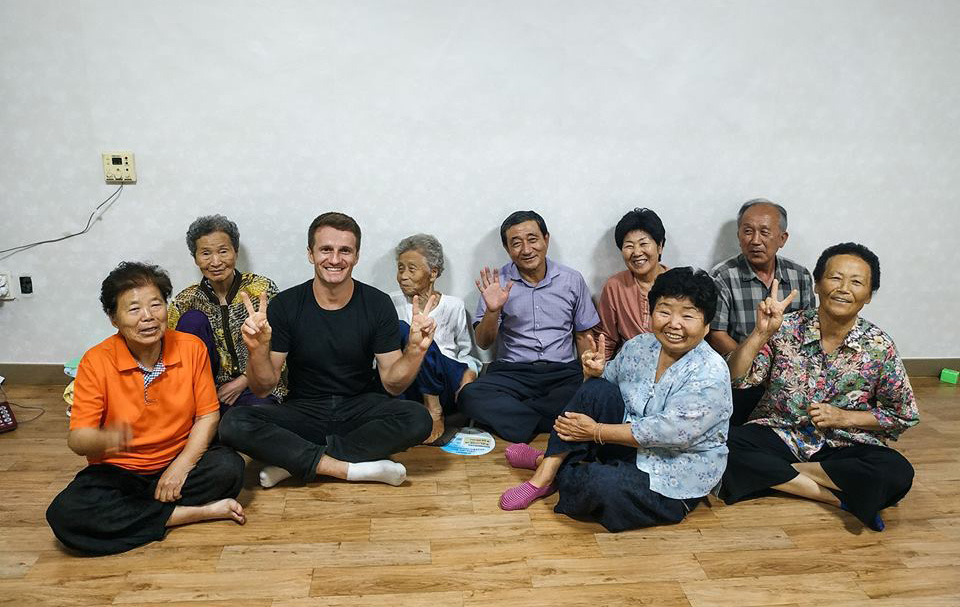
They asked me what I thought of their village, and I responded that everyone is here is so good looking, which drew a laugh. I asked them how they all managed to stay youthful into their old age.
He Yun responded that their secret to longevity is the clean air, and the fact that they never fight; they share only love.
He Yun is a retired schoolteacher who worked in Daegu, a large city to the south. Currently, he is the head of the Kim clan in Sachon, of which there are about 300 members in this town alone, and lives on the largest estate at the center of town.
This type of home is called Manchwidang, and was originally built more than 400 years ago by a noted Confucian scholar.
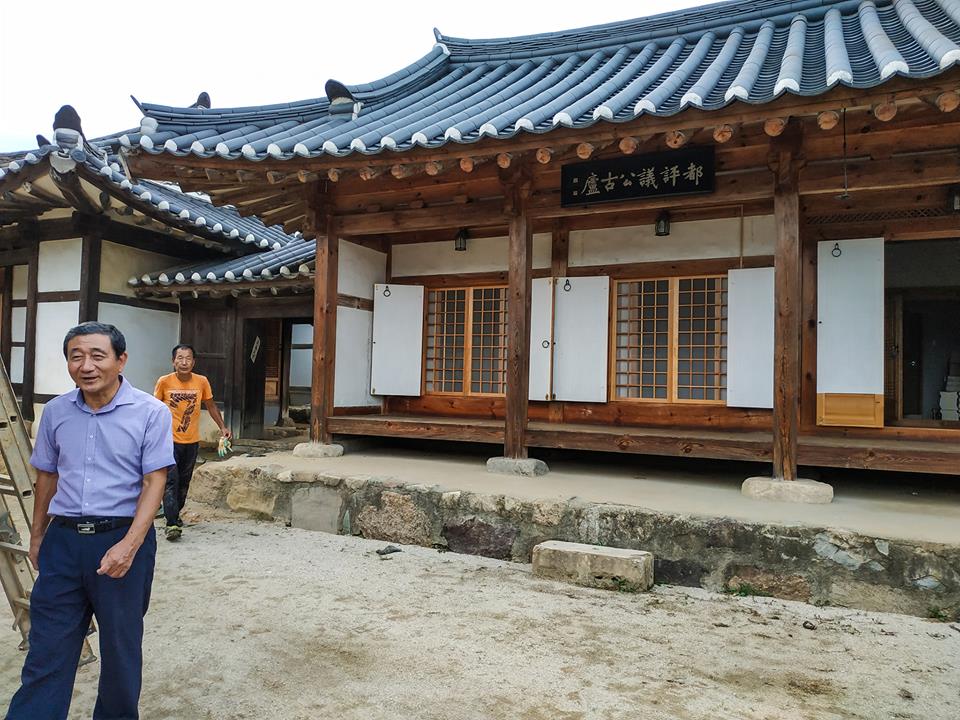
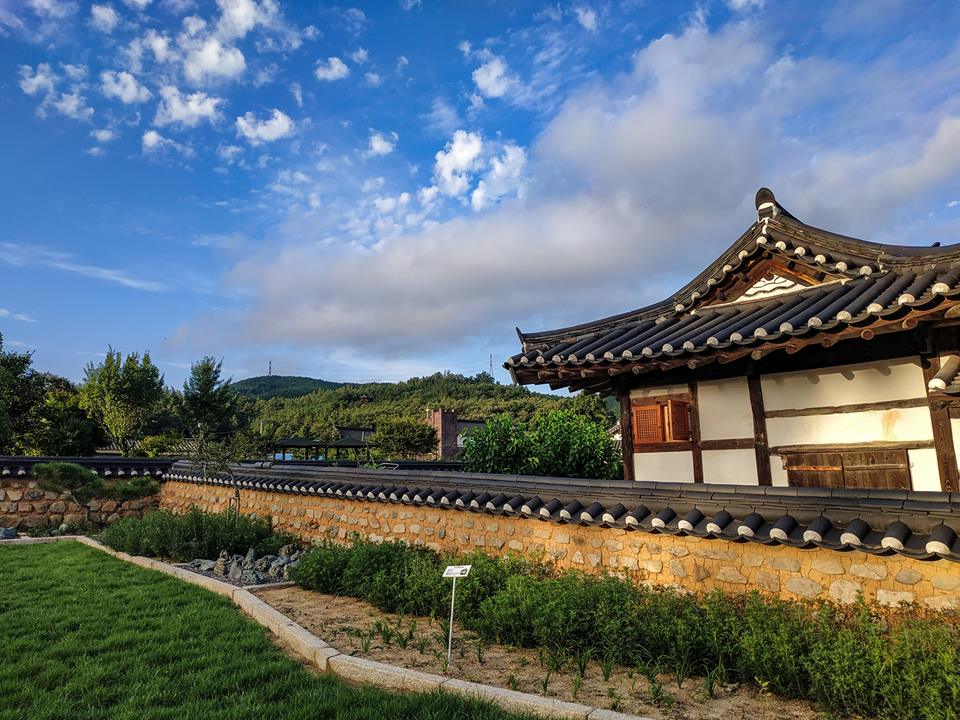
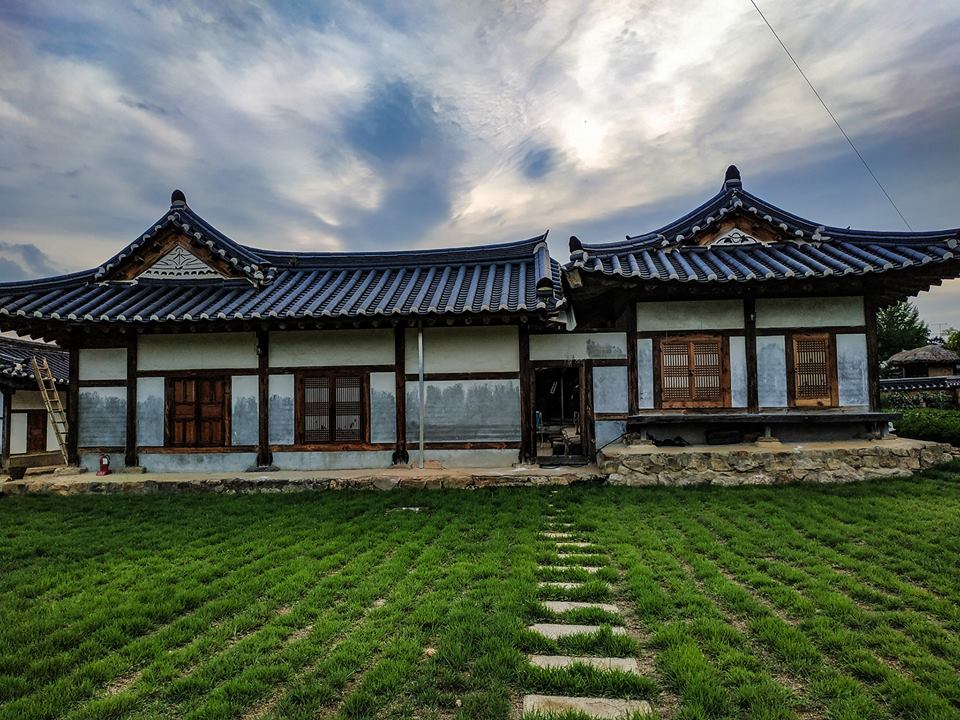
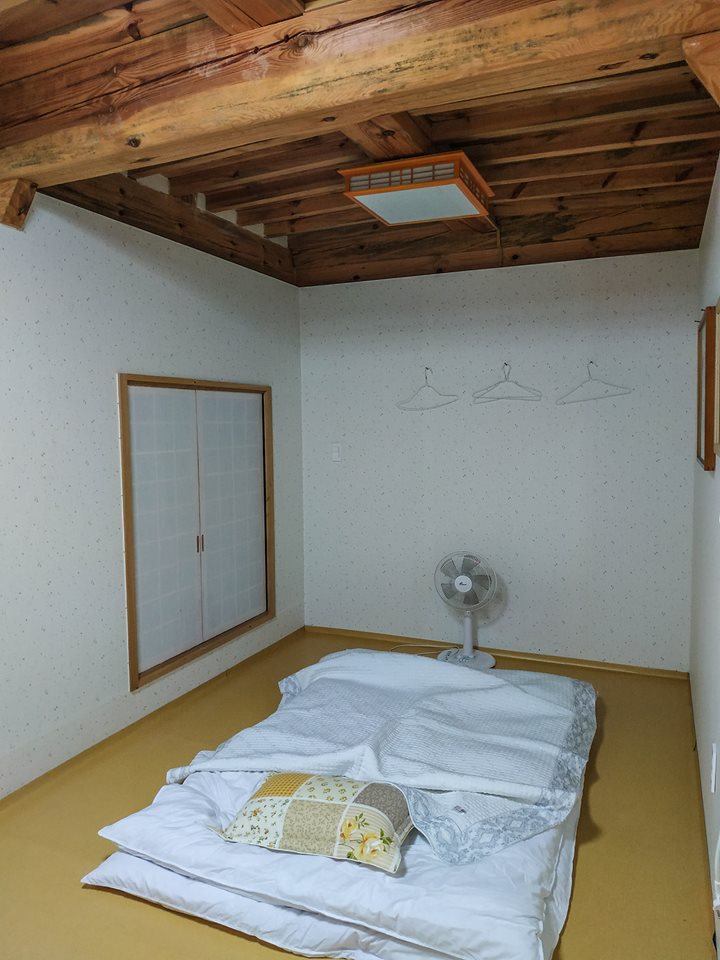
My room. Rather large as far as hanok rooms go (most are quite tiny)!
This was my home during my stay; and what a treat it was! Just a couple of weeks before visiting here, I stayed in a very small Korean hanok home in Jeonju (another city in Korea) and was so enchanted by the experience that I dreamt about one day living in such a place.
To be able to stay in a guesthouse on the property of the clan leader of one of Korea’s oldest and most distinguished families was very special for me.

I’m roughing it! My “office” in this traditional home… where I begun work on this post.
After my first night I was eager to explore around the town and He Yun and I went on a morning walk through the forest and to the top of a hill with a viewpoint. The fact that these natural scenic areas were less than a five minute walk away from his estate was rather astonishing to me! I’ve spent so much time living in huge cities which require a bus, train, or plane to reach this type of natural scenery which these people enjoy in their own backyard.
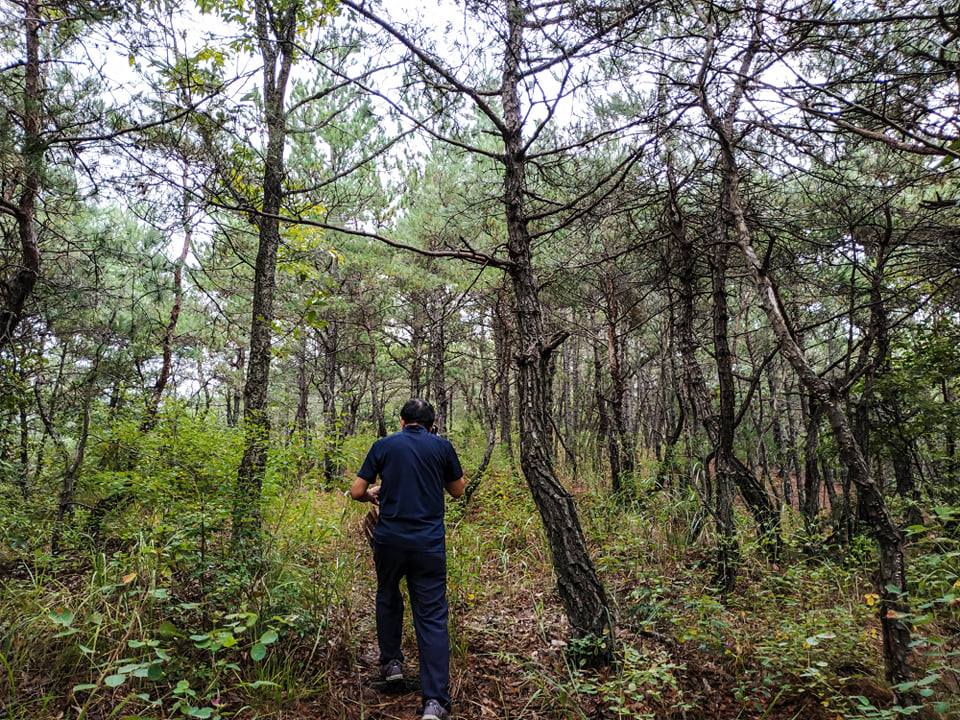
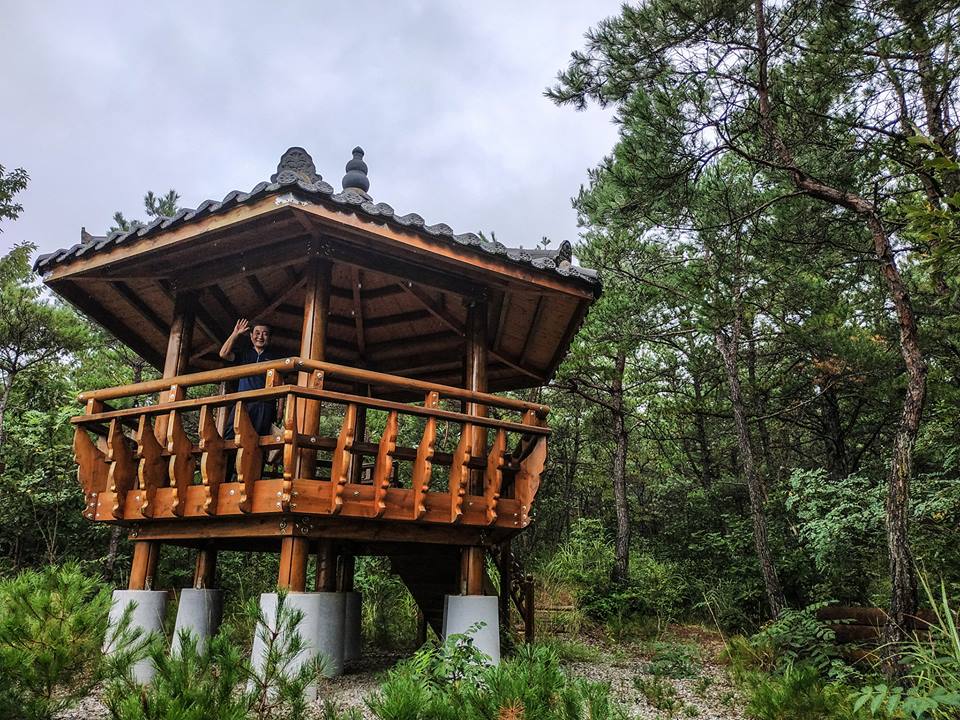
After a few days the first storytellers from abroad arrived and the townsfolk hosted an elaborate ceremony to receive them, and treated us all to a feast fit for royalty!
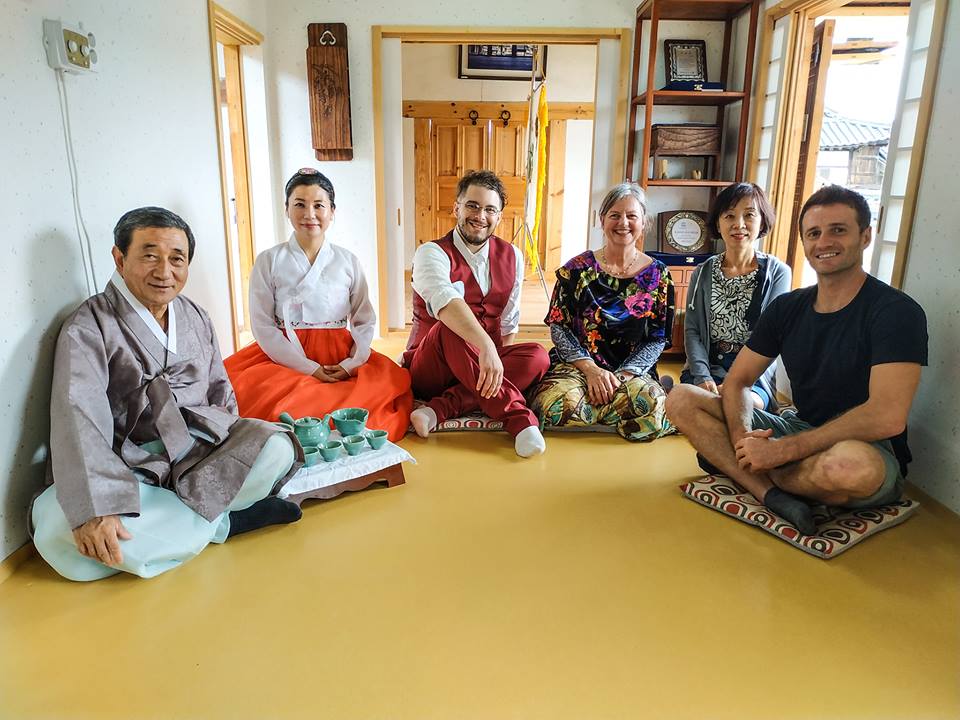
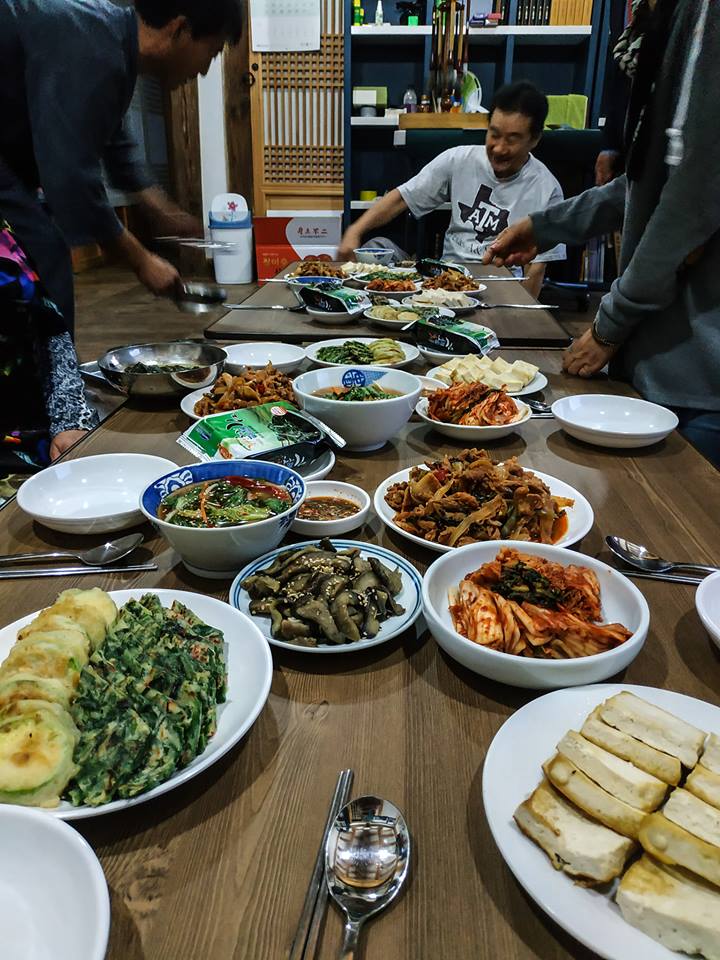
Even though I spent only a few days and nights in their town, the villagers here have stolen my heart. As I wrap up this article I have just said goodbyes to all of these kind people only today and miss them already. He Yun bid me farewell this morning, and handed me a bag full of the freshest apples from their fields to bring on my journey.
I have received no compensation for this article. The townsfolk of Sachon hosted me in their home and extended their great hospitality without asking or expecting anything in return. I’m writing this post because I want to, and I’m deeply touched by the the warmth and generosity I’ve received.
I’m also sensitive to their plight, and would encourage anyone and everyone to pay these nice people a visit and receive their hospitality, observe their customs and culture, and in the process help to rejuvenate a disappearing — but immensely rich and valuable — way of life, firsthand.
I know you all want to see more photos of this beautiful village so here you go!
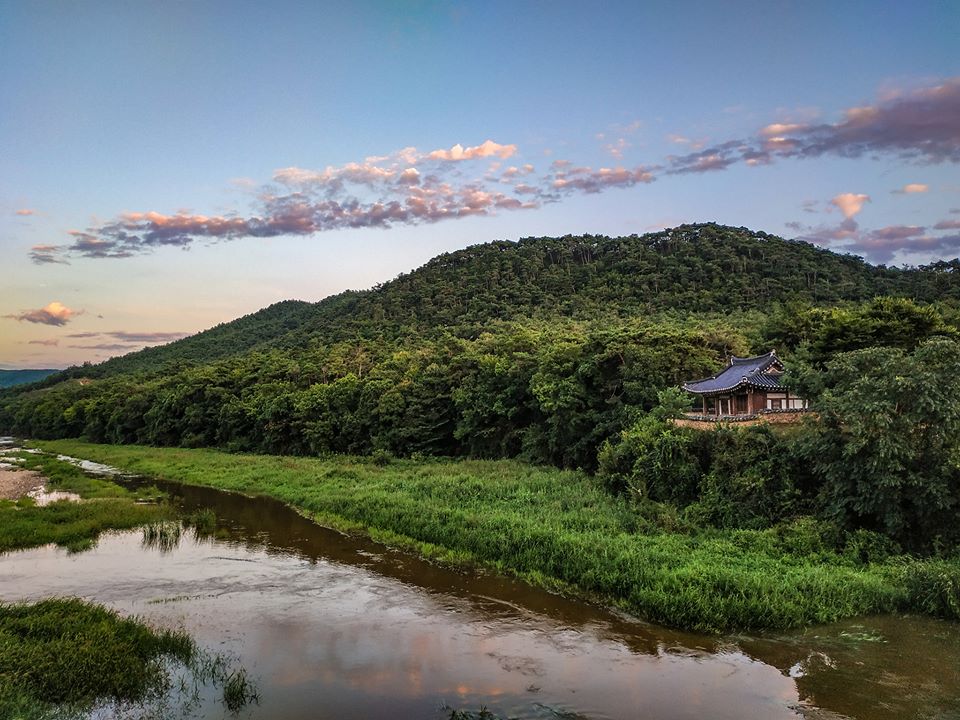
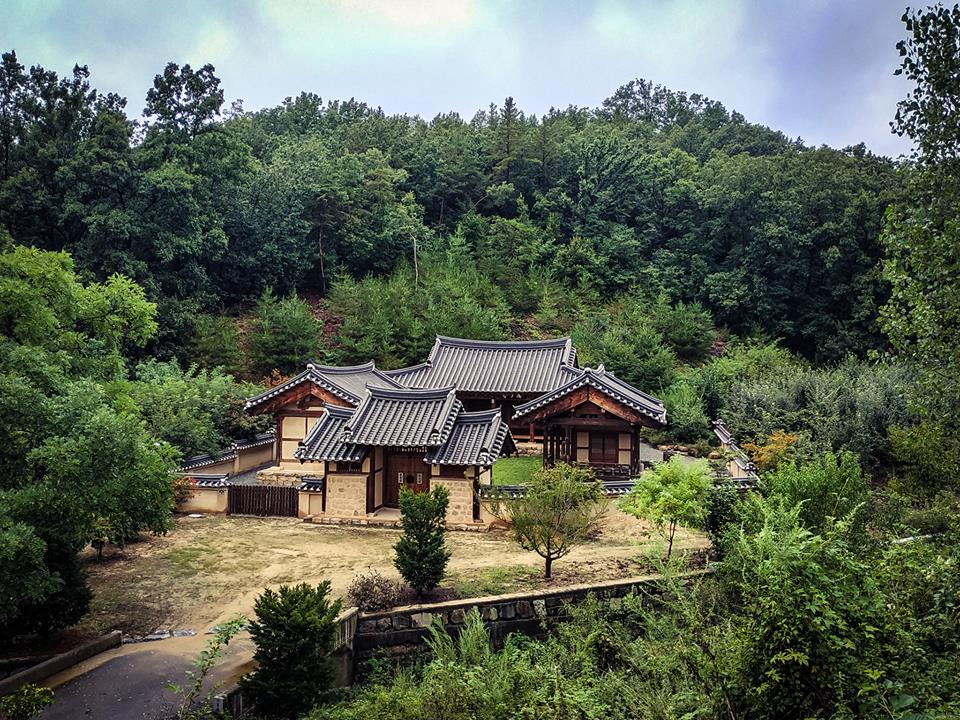

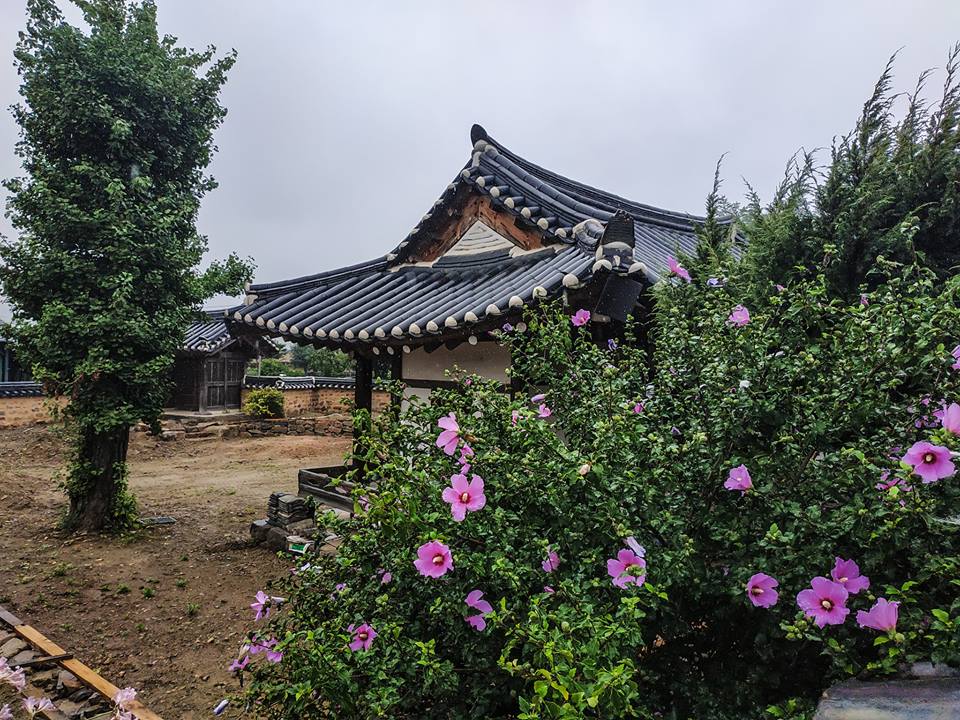
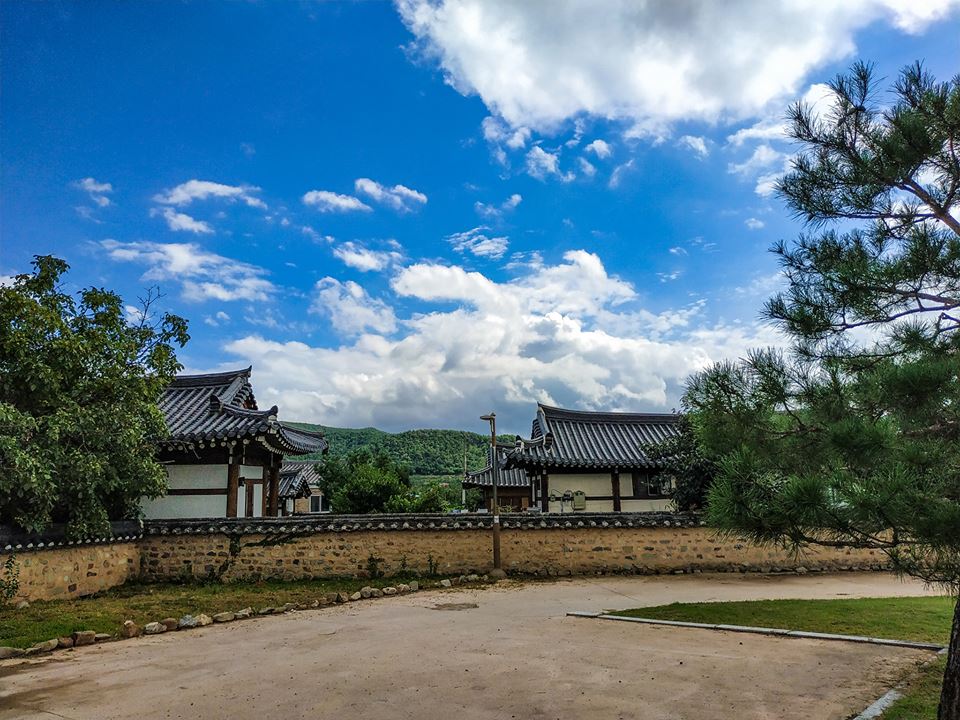

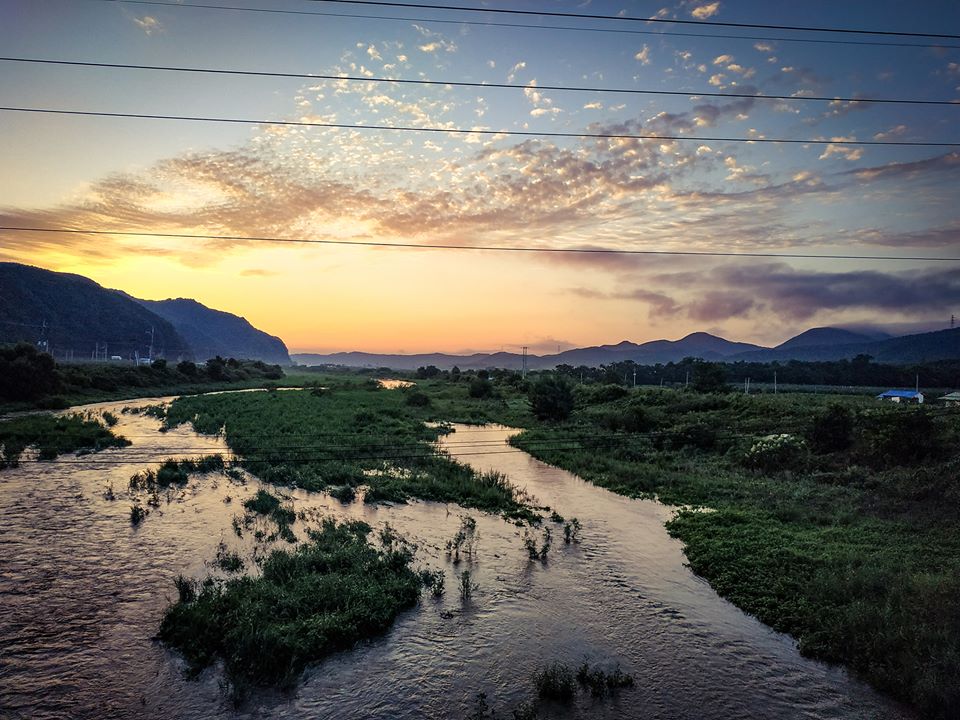
To reach Sachon village, you can take an Express bus from Seoul to Uiseong, which takes about 3 and a half hours. You can take a local bus from the Uiseong terminal to Sachon. Seung Ah plans to host her first storytelling performances here in the Spring and Fall of 2019, so be sure and mark your calendar for a visit!


